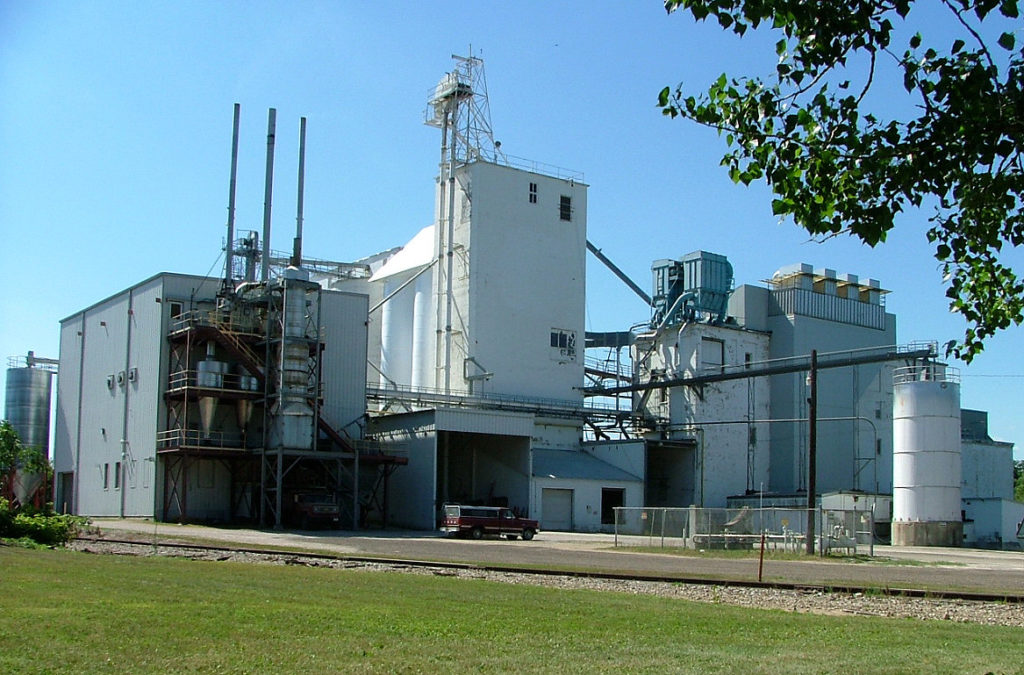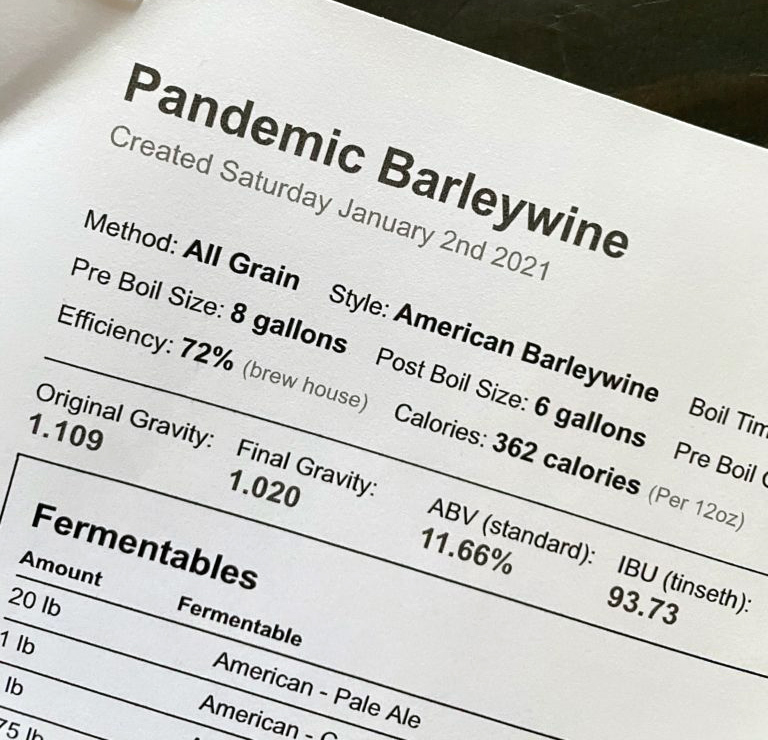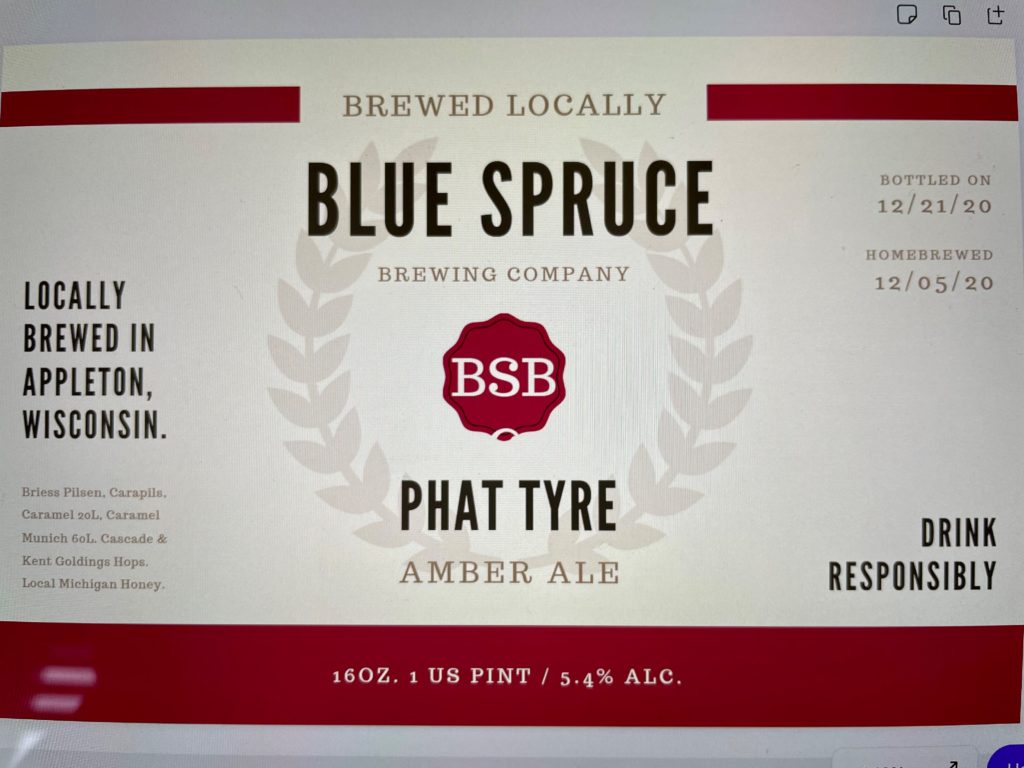
(*homebrew label only)
Everyone probably has a great memory or that “Aha” moment when you fell in love with your favorite craft beer. I remember mine going back in time 15 years when I had my first New Belgium Fat Tire Amber Ale. I had always heard of the beer and brewery, but being from the Midwest it wasn’t available in our region. So while living on the West coast I had a buddy of mine introduce me to Fat Tire. The liquid libation was enjoyed after my first surfing lesson…I’d like to say it went well, but the waves remember otherwise. What I remember most was the beer’s amazing mouthfeel; the malty sweetness offering a thirst-quenching appeal kept me going back for more…I’m not privy to how many we enjoyed that sunny afternoon, but I was hooked.
Prior to Briess, I was lucky enough to work with New Belgium very closely for nearly 10 years during my time on the distribution side here in Wisconsin. It was great! I remember when we rolled out 22 oz. “Bombers” of Fat Tire, 1554 Black Ale and Mothership Wit dominated the market, along with many other amazing beers, collaborations, and one offs, along with many unique marketing programs to support such an iconic craft brewery. Now fast forward to the present with IPA’s dominating the landscape along with their sour collection, but what’s always remained sure and steadfast is Fat Tire. I’ll never forget the trips over to New Belgium; the brewery just had a sense of zen and well-being, everything that makes me love this industry. I also cherish the memories of “Rolle Bolle” on the campus, and I’ll never forget the rides on the slide at the end of the tour. I’m pretty sure they want that memory to stick with you. I know Briess malts have been used a lot over the years at New Belgium, so that inspired me in making my first homebrew of “Phat Tyre” Amber Ale.
I’ve never bottled an entire homebrew batch on my own (always kegged), so this past holiday season I knew it was time. Both my father and father-in-law have always loved Fat Tire so I brewed this beer for both of them, and gave each a case of 16 oz. bottles with custom labels as Christmas presents this past year. Beer is meant to be enjoyed even if in a socially distant manner, so express yourself by brewing something you know others will enjoy and share the craft of homebrewing with as many friends and family as possible. Here is my recipe for Phat Tyre Amber Ale.
Recipe is for 5 U.S. gallons (19L)
- OG: 1.056
- FG: 1.015
- ABV: 5.36%
- IBU: 41
- (SRM): 20
QUANTITY/INGREDIENTS
- 6 lbs. Briess Synergy Select Pilsen MaltGems®
- 3 lbs. Briess Caramel Munich Malt 60L (pre-milled)
- 2.5 lbs. Briess Caramel Malt 20L (pre-milled)
- 0.75 lb. Briess Carapils® Malt (pre-milled)
- 1.25 oz. Cascade hops
- 1 lb. Rice Hulls
- 1 oz. Kent Golding hops
- 0.5 tsp. Irish Moss
- 1 lb. Michigan Honey
- Wyeast: 1098 British Ale Yeast
BREWING PROCEDURE
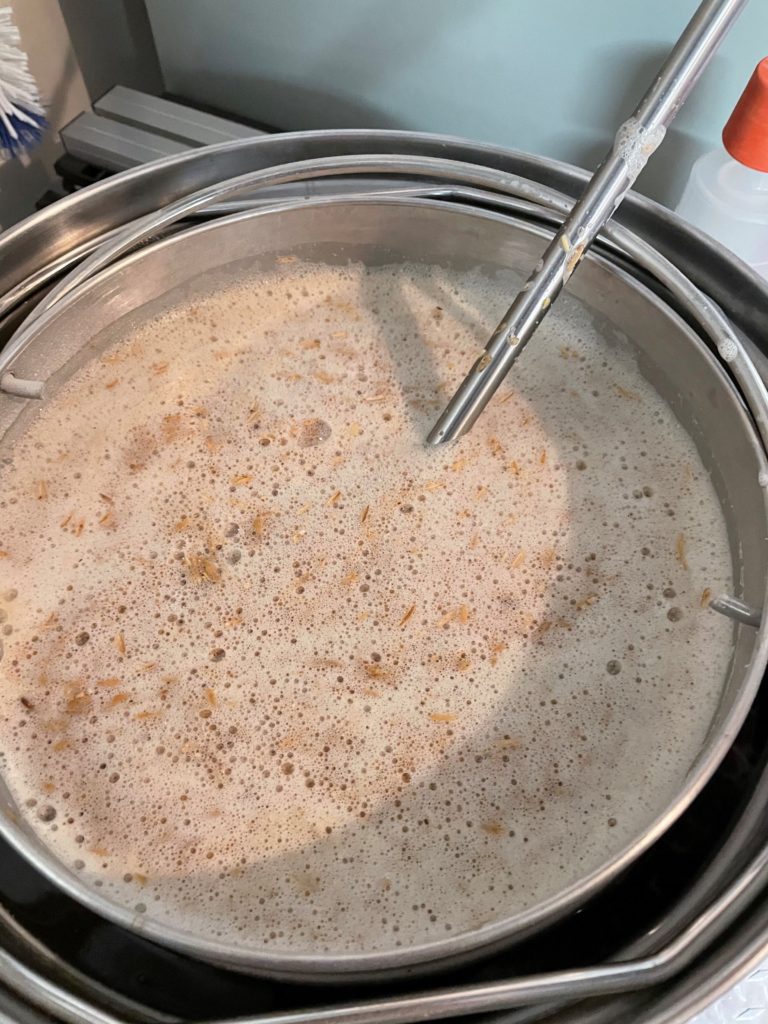
Mashing:
Pour at least 6.5 gallons of water (I’m using my all-in-one electric brewing system) into the brew vessel and heat to 155°F. While water is heating, add the grains slowly while stirring. Continue stirring for a few minutes after the grain has been added to make sure the entire mash is at a consistent temperature and that all dough balls have been eliminated. Letting the mash sit for 60 minutes at 155°F will result in full enzymatic conversion of the starches to sugars.
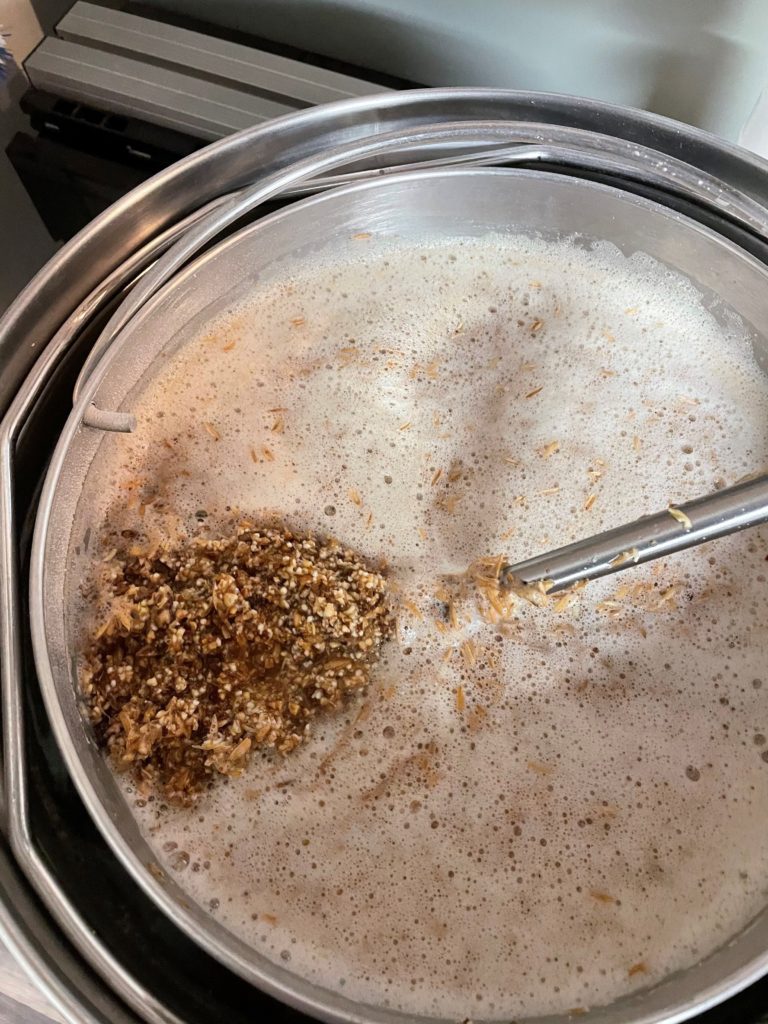
Vorlauf:
There’s a little step in between mashing and sparging that helps to clear up the runoff from the mash. Recirculate the wort by removing some from the spigot below the false bottom and add it back to the top of the grain bed. Do this until the runoff is nearly free of visible debris, then you can start to sparge.
Sparging:
Begin the process by opening the Hot Liquor tank valve and allowing the water to flow onto the grain bed. A stationary sparge arm is a time-saving addition for this process if you have one handy. Connect a piece of tubing onto the ball valve of the mash tun to drain into the boil kettle. Open the valve on the bottom of the mash tun to allow wort to flow out of the mash tun. Keep at least a two-inch layer of water on top of the grain bed to prevent incoming sparge water from channeling through the grain. We recommend a slow sparge, usually taking 45-60 minutes to ensure there is plenty of time for the sugars to rinse out.
Boil:
Add 1 oz. Kent Golding hops at boil for 55 minutes. Add 1.25 oz. Cascade hops during boil for final 30 minutes.
Cooling:
Cool the wort as quickly as possible by placing it in an ice bath. Temperature must be below 100°F before it is safe for yeast. Put a lid on the brew vessel while it cools to avoid contamination.
While the wort is cooling, sanitize the fermenting equipment (fermenter, lid, rubber stopper, thermometer, airlock, etc.), along with the yeast pack and a pair of scissors.
Once wort cools down to 80°F or lower, transfer to the fermenter. Leave residue in the bottom of the brew vessel. You may have to use a funnel at this point if your fermenter is a carboy.
Aerate the wort by sealing the fermenter and rocking back and forth for a few minutes. Use sanitized scissors to open the yeast pack and add yeast to the wort. Seal your fermenter. Add water to the airlock until it reaches the fill line and insert into the stopper.
Let your beer ferment for 2 weeks in a cool (72°F or lower) dark place.
Fermentation:
Fermentation activity will last between 12-72 hours after adding the yeast. A krausen (kroy-ZEN) layer will develop on the top layer during fermentation. After 72 hours, fermentation will slow down, the krausen layer will subside, and activity will be minimal the remainder of these two weeks.
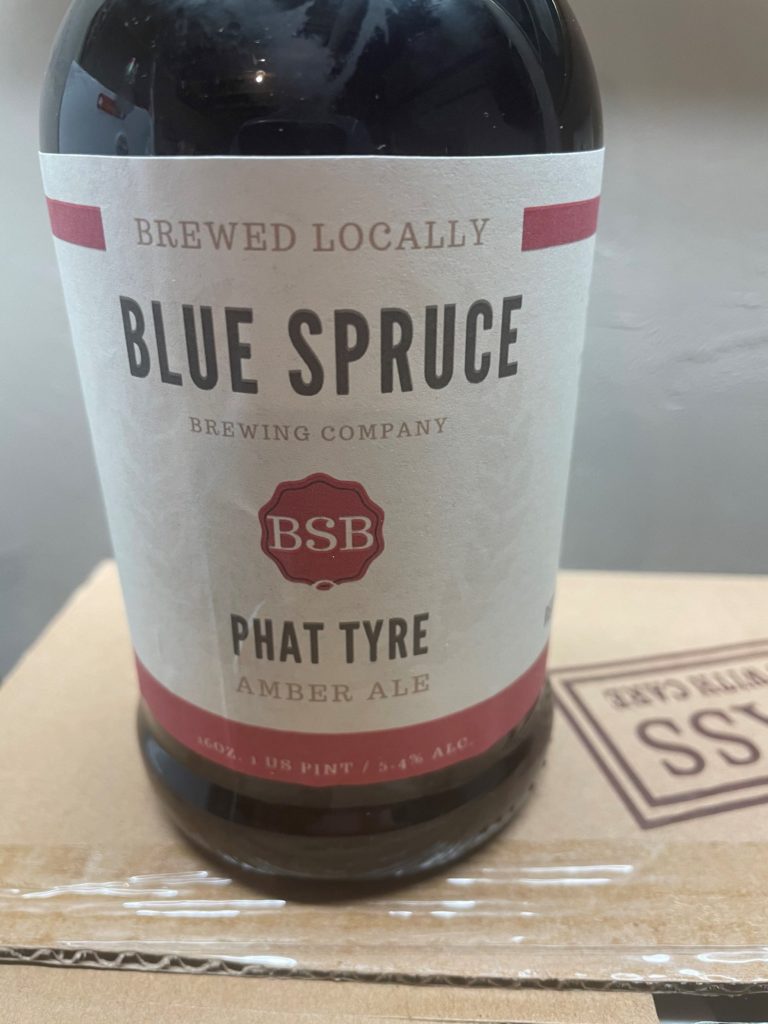
Bottling or Kegging:
- Sanitize siphoning and bottling/kegging equipment.
- Mix a priming solution (a measured amount of sugar dissolved in water to carbonate the bottled beer). Use the following amounts, depending on which type of sugar you use:
- Corn Sugar (dextrose) 2/3 cup in 10 oz. water
- Table Sugar (sucrose) 5/8 cup in 16 oz. water
- Pour solution into the bottling bucket.
- Siphon beer into bottling bucket and mix with priming solution. Stir gently to mix — don’t splash.
- Fill and cap bottles.
- Kegging — fill beer from fermenter into keg — pressurize as you see fit and enjoy!

